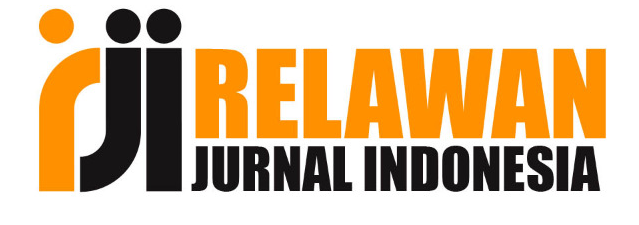Persepsi Dokter Klinik Dalam Menggunakan Rekam Medis Elektronik Berbasis Cloud Computing: Survei Penggunaan rekmed.com
DOI:
https://doi.org/10.36982/jiig.v13i3.2691Abstract
Background : The use of electronic medical records (EMR), including cloud computing-based EMR, is widely increasing. However, data regarding the perception of physicians using cloud computing-based EMR in Indonesia is still limited. Objective: This study aims to determine the perception of clinical doctors in using EMR based on cloud computing. Methods: This is a cross sectional study with a mixed-methods explanatory sequential design approach to determine the perception of clinicians in using cloud computing-based EMR. Qualitative analysis is used to support the depth of quantitative data analysis. Result: There are 10 private clinic doctors who participate. The average value of respondents' satisfaction after using cloud computing-based EMR is 7.4 from a scale of 1-10, with a median value of 8. In the analysis of interest in using cloud computing-based EMR in the long term, it was found that 30% of respondents said "yes", and 70% said "maybe". Qualitative data show that the problems in using EMR are the high price of the EMR system, security and privacy, the display is still limited, and the need for a stable internet network. Conclusion: The use of cloud computing-based EMR by clinicians still meet a number of obstacles. Further development is needed to increase the satisfaction and interest of doctors using RME based on cloud computing
Keywords: electronic medical records, cloud computing, clinical physicians, perception
References
Ahmadi, M. and Aslani, N. (2018) ‘Capabilities and advantages of cloud computing in the implementation of Electronic Health Record’, Acta Informatica Medica, 26(1), pp. 24–28. doi:10.5455/aim.2018.26.24-28.
Alanazi, B., Butler-Henderson, K. and Alanazi, M.R. (2020) ‘Factors influencing healthcare professionals’ perception towards EHR/EMR systems in gulf cooperation council countries: A systematic review’, Oman Medical Journal, 35(5), pp. 1–18. doi:10.5001/omj.2020.85.
Boonstra, A. and Broekhuis, M. (2010) ‘Barriers to the acceptance of electronic medical records by physicians from systematic review to taxonomy and interventions’, BMC health services research, 10, p. 231. doi:10.1186/1472-6963-10-231.
Budiyanti, R.T., Arso, S.P. and Herlambang, P.M. (2018) ‘Rekam Medis Elektronik Berbasis Cloud’, Cermin Dunia Kedokteran Edisi 268, 45(9), pp. 695–698.
Chhanabhai, P. and Holt, A. (2007) ‘Consumers Are Ready to Accept the Transition to Online and Electronic Records If They Can Be Assured of the Security Measures’, Medscape General Medicine, 9(1), p. 8.
Heryati, A. et al. (2019) ‘The design of smart notification on android gadget for academic announcement’, Telkomnika (Telecommunication Computing Electronics and Control), 17(1), pp. 147–152. doi:10.12928/TELKOMNIKA.v17i1.10245.
Heryati, A. and Herdiansyah, M.I. (2020) ‘The Application of Data Mining by using K-Means Clustering Method in Determining New Students’ Admission Promotion Strategy’, International Journal of Engineering and Advanced Technology, 9(3), pp. 824–833. doi:10.35940/ijeat.c5414.029320.
Keshta, I. and Odeh, A. (2021) ‘Security and privacy of electronic health records: Concerns and challenges’, Egyptian Informatics Journal, 22(2), pp. 177–183. doi:10.1016/J.EIJ.2020.07.003.
Kholili, U. (2011) ‘Pengenalan Ilmu Rekam Medis Pada Masyarakat Serta Kewajiban Tenaga Kesehatan di Rumah Sakit’, Jurnal Kesehatan Komunitas, 1(2), pp. 60–72. doi:10.25311/keskom.vol1.iss2.12.
Ludwick, D.A. and Doucette, J. (2009) ‘Adopting electronic medical records in primary care: Lessons learned from health information systems implementation experience in seven countries’, International Journal of Medical Informatics, 78(1), pp. 22–31. doi:10.1016/j.ijmedinf.2008.06.005.
Nithya, B. and Sripriya, P. (2016) ‘A Review of Cryptographic Algorithms in Network Security’, International Journal of Engineering and Technology (IJET), 8(Feb-Mar 2016), pp. 324–331.
Noviyanti (2021) BBKPM Bandung.
Nuryati (no date) Aspek Hukum Rekam Medis Elekronik – Sarjana Terapan Manajemen Informasi Kesehatan.
Pakhchanian, H. et al. (2021) ‘Outcomes of COVID-19 in CKD patients: A multicenter electronic medical record cohort study’, Clinical Journal of the American Society of Nephrology, 16(5), pp. 785–786. doi:10.2215/CJN.13820820.
Pengantar ilmu kriptografi : Teori, analisis dan implementasi/ Dony Ariyus | OPAC Perpustakaan Nasional RI. (no date).
Pryor, R. et al. (2020) ‘The electronic medical record and COVID-19: Is it up to the challenge? Rachel’, (January). doi:https://doi.org/10.1016/j.ajic.2020.05.002.
Schenarts, P.J. and Schenarts, K.D. (2012) ‘Educational impact of the electronic medical record’, Journal of surgical education, 69(1), pp. 105–112. doi:10.1016/J.JSURG.2011.10.008.
Singh, S. et al. (2020) ‘Outcomes of Hydroxychloroquine Treatment Among Hospitalized COVID-19 Patients in the United States- Real-World Evidence From a We acknowledge the West Virginia Clinical and Translational Science Institute to provide us access , and training to the TriNETX’, medRxiv [Preprint].
Terttiaavini et al. (2018) ‘Clustering Analysis of Premier Research Fields’, International Journal of Engineering & Technology, 7(4.44), p. 43. doi:10.14419/ijet.v7i4.44.26860.
Terttiavini, T. (1999) Sistem Pakar Penentu Bidang Studi Berdasarkan Potensial Ability.
Uslu, A.M. and Stausberg, J. (2008) ‘Value of the electronic patient record: An analysis of the literature’, Journal of Biomedical Informatics, 41(4), pp. 675–682. doi:10.1016/j.jbi.2008.02.001.
Downloads
Published
How to Cite
Issue
Section
License

This work is licensed under a Creative Commons Attribution-ShareAlike 4.0 International License.











